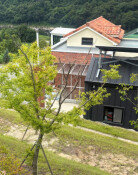[Opinion] Jikji Receives Recognition As Oldest Metal Printing Work
[Opinion] Jikji Receives Recognition As Oldest Metal Printing Work
Posted April. 29, 2004 21:15,
UNESCO (The United Nations Education, Scientific, and Cultural Organization) has decided to establish a prize in memory of an ancient Korean book designated as world documentary heritage. The UNESCO/Jikji World Prize commemorates "Jikjisimcheyoujol", the world`s oldest text printed with metal type. UNESCO has also celebrated King Sejong with the King Sejong Prize for personalities or organizations who have dedicated themselves to ridding the world of illiteracy since 1990. World organizations have now acknowledged the advanced technology of printing in ancient Korea, but we, the heroes of the story, do not seem to know much about its meaning.
Korea and Germany have long been in an argument over the first recorded use of metal printing. Until recently, the international society has acknowledged the Gutenberg Bible in Germany, printed in 1452, as the worlds oldest metal printing work. Korea has been insisting that they have been using metal printing since 1234, called Sanjongyemun, which precedes its German counterpart by more than two centuries. However, the country did not have any concrete proof for its claim and did not receive any recognition for it.
1972 came with a foreign contributor to this opinion. The French National Library proved that Jikjisimcheyoujol was printed during Goryeo Dynasty in 1377 at the World Book Fair held at UNESCO Headquarters in Paris. Therefore, Korea was acknowledged as the country with the worlds oldest metal printing work, predating by 78 years the Gutenberg Bible in Germany, even though there is still no concrete evidence of the fact that the first work was published in 1234.
Jikji is a two-volume book of Dharma talks and poems of Buddhist Monk Baekun Hwasang of the late Goryeo Period. The word Jikji comes from JikJiInShim GyeonSeongSeongBul), meaning, The human mind is Buddhist nature itself. Victor Collin de Plancy, who came to Korea as a French diplomatic envoy in the late nineteenth century, took the book to his country and sold it to an antique seller. A descendent of the seller donated the piece to the French National Library in 1905. Only the second volume remains, minus its cover page. However, the last page clearly reveals the publishing date of the book. This international acknowledgement is truly thanks to the careful oversight of Buddha.
Editorial Writer Oh Myeong-chul, oscar@donga.com






![[이진영 칼럼]꿈쩍도 않는 국힘 ‘쩍벌남’들](https://dimg.donga.com/c/138/175/90/1/wps/NEWS/IMAGE/2025/07/08/131964977.1.jpg)
